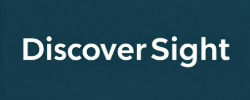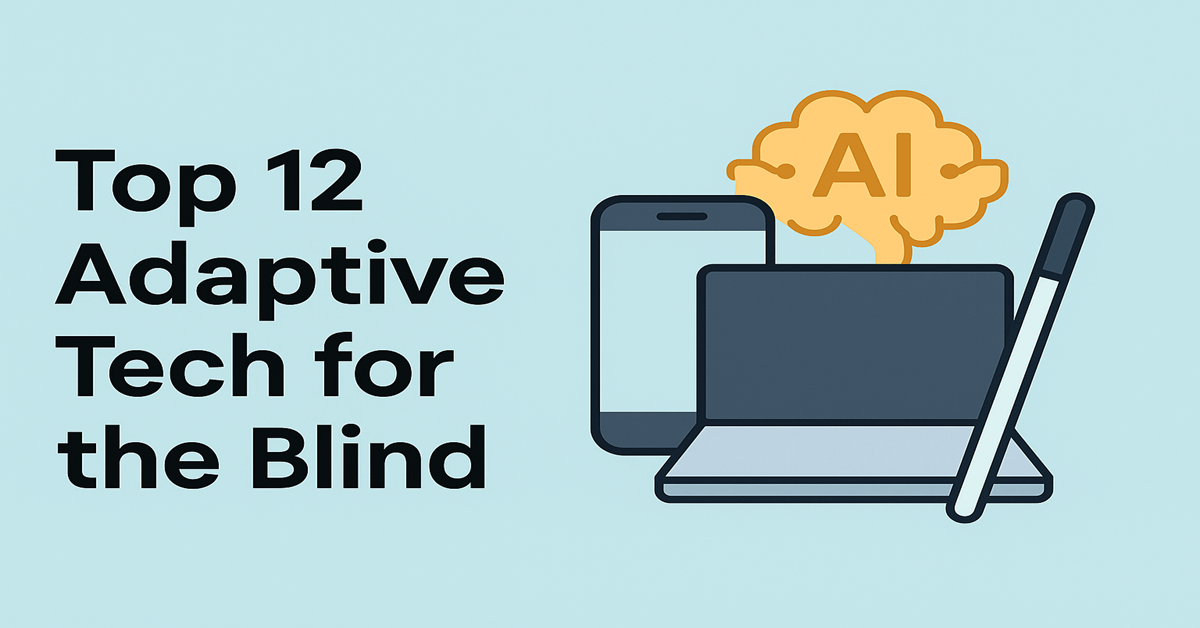Introduction
Imagine not being able to see the screen but still checking your email, reading a menu, or getting around a train station. For people like me who are blind, this is possible—thanks to technology made just for us.
The problem is, many of these technologies aren’t widely known or easily available. Even when they exist, people often don’t know about them or how to use them. Some tools are amazing, and some just don’t help much. That’s why I wrote this guide.
I’m a blind user who’s tried many of these tools myself. In this post, I’ll show you the best ones that truly help. I’ll keep it simple, clear, and useful. Whether you’re blind, helping someone who is, or just curious, this will help you understand what’s worth using.
Let’s get started.
What Is Adaptive Technology for Blind Users?
Adaptive technology includes any tool that helps blind people do things independently. This might mean reading, moving around, using a computer or phone, or interacting with the world through sound or touch.
Some tools are free, some cost money, and many work with your phone or computer. The goal is to give blind users more freedom and confidence in everyday life.
Who This Guide Is For
This guide is for anyone who wants to understand or use adaptive technology better:
– Blind or visually impaired users
– Family, friends, and caregivers
– Teachers and accessibility trainers
– Developers and designers building inclusive tech
How I Picked These Tools
I use some of these adaptive technologies for blind users every day. Others I discovered through in-depth research and advice from the visually impaired community. When selecting the best assistive devices and apps, I focused on tools that met these criteria:
– Easy to use, even for beginners
– Affordable or free accessibility tools
– Proven to help with daily tasks like reading, navigation, or communication
– Fully compatible with screen readers and voice assistants
– Smart use of AI to improve usability and independence
Top Tools at a Glance
Here’s a quick comparison table to help you choose the right adaptive technology. Whether you’re just starting or looking to try something new, this list gives you a snapshot of each tool’s purpose, cost, and usefulness.
Top Tools You Should Know About
- NVDA
This is a free screen reader for Windows. I use it every day. It reads everything on the screen and lets me use apps, websites, and documents easily.
- JAWS
JAWS is a paid screen reader. It has more features than NVDA and works great for jobs or school work. If you can get it, it’s a strong option.
- VoiceOver
VoiceOver is built into iPhones and MacBooks. It speaks what’s on the screen. It also works well with Braille displays. I use this when I’m on my iPhone.
- TalkBack
TalkBack is like VoiceOver but for Android phones. It comes already installed. You just need to turn it on. It helps you move around your phone using gestures and voice.
- ChatGPT
This is the AI I’m using to help write this blog. I use it to write emails, notes, or even jokes. It listens to what I say and types or replies back.
- Google Gemini
Gemini is Google’s version of an AI assistant. It’s good for quick help like reading, reminders, or answering questions. It’s built into some Android phones.
- Seeing AI
This app tells you what’s in front of your camera. It can read signs, money, and even faces. I use it to check labels or read printed mail.
- Lookout by Google
Lookout is like Seeing AI. It reads things around you using your phone’s camera. It can help at stores, kitchens, or outside.
- Be My Eyes
This app connects you with volunteers who see through your phone camera and tell you what they see. You can also talk to an AI helper now. Great for when you’re stuck.
- Envision Glasses
These are smart glasses that can read text, find things, and describe surroundings. They are pricey but very powerful.
- Braille Displays
These are tools that show Braille that changes as you read. I use one to read quietly. They’re expensive but useful for those who read Braille.
- Smart Speakers
Devices like Alexa or Google Home help with playing music, setting reminders, or asking questions. I use them daily for small tasks.
How I Use These Tools in Real Life
– I write, study, and learn using ChatGPT
– I read food labels with Seeing AI
– I check room lights with Alexa
– I call for help with Be My Eyes
– I move around my phone with VoiceOver or TalkBack
Common Questions
**What’s the best free tool?**
NVDA, Seeing AI, VoiceOver (on iPhones), TalkBack (on Android phones), and Google Lookout are all free and very helpful. They’re built-in or easy to download and use right away.
**Can I use AI tools if I’m blind?**
Yes. I use ChatGPT and Gemini often. They are voice-friendly and work well with screen readers on both desktop and mobile. Whether you’re using NVDA, JAWS, VoiceOver, or TalkBack, these tools are accessible and easy to use.
**Do I need Wi-Fi for these tools?**
Most of them need the internet, especially for features like image recognition, AI help, or cloud syncing. But screen readers like JAWS, NVDA, VoiceOver, and TalkBack can work offline once they are installed. You don’t always need Wi-Fi to use basic screen reading functions.
What’s New and What’s Coming
– AI that remembers your past requests
– Smart glasses with GPS and object detection
– Voice-first writing tools
– Wearables that guide you using touch signals
Final Thoughts
Start with what you can afford and need most. For basic computer use, try NVDA. For help on the go, apps like Seeing AI and Be My Eyes are great.
Technology doesn’t give us sight, but it gives us freedom. It helps us work, travel, and connect with the world.
Thanks for reading. I’ll keep this guide updated as new tools come out.

